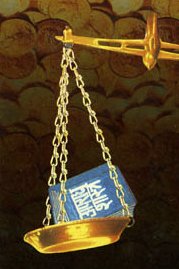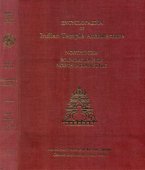Surashtra, Surāṣṭra, Su-rashtra: 19 definitions
Introduction:
Surashtra means something in Buddhism, Pali, Hinduism, Sanskrit, Jainism, Prakrit, the history of ancient India, Marathi. If you want to know the exact meaning, history, etymology or English translation of this term then check out the descriptions on this page. Add your comment or reference to a book if you want to contribute to this summary article.
The Sanskrit term Surāṣṭra can be transliterated into English as Surastra or Surashtra, using the IAST transliteration scheme (?).
In Hinduism
Purana and Itihasa (epic history)
Source: Cologne Digital Sanskrit Dictionaries: The Purana Index1a) Surāṣṭra (सुराष्ट्र).—A western kingdom visited by Vidura from the Sarasvatī. Its king attacked the eastern side of Gomanta with Jarāsandha.*
- * Bhāgavata-purāṇa II. 16. 62; Matsya-purāṇa 163. 72. Bhāgavata-purāṇa III. 1. 24; X 52. 11 [5].
1b) Of the south.*
- * Vāyu-purāṇa 45. 131.
Surāṣṭra (सुराष्ट्र) is a name mentioned in the Mahābhārata (cf. III.86.16, VI.10.47, V.72.14, VIII.30.73) and represents one of the many proper names used for people and places. Note: The Mahābhārata (mentioning Surāṣṭra) is a Sanskrit epic poem consisting of 100,000 ślokas (metrical verses) and is over 2000 years old.
Source: Shodhganga: The saurapurana - a critical studySurāṣṭra (सुराष्ट्र) refers to an ancient country which should be shunned, according to the 10th century Saurapurāṇa: one of the various Upapurāṇas depicting Śaivism.—It looks upon Kurukṣetra, Matsya, Pāñcāla and Surasena as holy countries where Dharma is practiced. It advises people to shun Aṅga, Vaṅga, Kaliṅga, Surāṣṭra, Gurjara, Ābhira, Kauṅkaṇa, Draviḍa, Dakṣiṇāpatha, Āndhra and Magadha.—(cf. verses 17.54-59) Thus it appears that this Purāṇa was written somewhere about the north-western part of northern India.

The Purana (पुराण, purāṇas) refers to Sanskrit literature preserving ancient India’s vast cultural history, including historical legends, religious ceremonies, various arts and sciences. The eighteen mahapuranas total over 400,000 shlokas (metrical couplets) and date to at least several centuries BCE.
Arthashastra (politics and welfare)
Source: archive.org: Personal and geographical names in the Gupta inscriptions (artha)Surāṣṭra (सुराष्ट्र).—In Kauṭilya’s Arthaśāstra, Surāṣṭras are mentioned as one of the corporations of warriors who lived by agriculture and trade. According to the Arthaśāstra the elephants of Surāṣṭra were inferior to those belonging to Aṅga and Kaliṅga.

Arthashastra (अर्थशास्त्र, arthaśāstra) literature concerns itself with the teachings (shastra) of economic prosperity (artha) statecraft, politics and military tactics. The term arthashastra refers to both the name of these scientific teachings, as well as the name of a Sanskrit work included in such literature. This book was written (3rd century BCE) by by Kautilya, who flourished in the 4th century BCE.
Kavya (poetry)
Source: Shodhganga: The Kavyamimamsa of RajasekharaSurāṣṭra (सुराष्ट्र) is the name a locality mentioned in Rājaśekhara’s 10th-century Kāvyamīmāṃsā.—Kaṭhiāwāḍ and other portion of northern most Gujarat.

Kavya (काव्य, kavya) refers to Sanskrit poetry, a popular ancient Indian tradition of literature. There have been many Sanskrit poets over the ages, hailing from ancient India and beyond. This topic includes mahakavya, or ‘epic poetry’ and natya, or ‘dramatic poetry’.
Jyotisha (astronomy and astrology)
Source: Wisdom Library: Brihat Samhita by VarahamihiraSurāṣṭra (सुराष्ट्र) [=Saurāṣṭra] refers to a country (identified with Surat), belonging to “Nairṛtī (south-western division)” classified under the constellations of Svāti, Viśākhā and Anurādhā, according to the system of Kūrmavibhāga, according to the Bṛhatsaṃhitā (chapter 14), an encyclopedic Sanskrit work written by Varāhamihira mainly focusing on the science of ancient Indian astronomy astronomy (Jyotiṣa).—Accordingly, “The countries of the Earth beginning from the centre of Bhāratavarṣa and going round the east, south-east, south, etc., are divided into 9 divisions corresponding to the 27 lunar asterisms at the rate of 3 for each division and beginning from Kṛttikā. The constellations of Svāti, Viśākhā and Anurādhā represent the south-western division consisting of [i.e., Surāṣṭra] [...]”.

Jyotisha (ज्योतिष, jyotiṣa or jyotish) refers to ‘astronomy’ or “Vedic astrology” and represents the fifth of the six Vedangas (additional sciences to be studied along with the Vedas). Jyotisha concerns itself with the study and prediction of the movements of celestial bodies, in order to calculate the auspicious time for rituals and ceremonies.
In Buddhism
Mahayana (major branch of Buddhism)
Source: archive.org: Bulletin of the French School of the Far East (volume 5)Surāṣṭra (सुराष्ट्र) (in Chinese: Sieou-lo-tch'a) refers to one of the fifty-five kingdoms enumerated in chapter 17 of the Candragarbha: the 55th section of the Mahāsaṃnipāta-sūtra, a large compilation of Sūtras (texts) in Mahāyāna Buddhism partly available in Sanskrit, Tibetan and Chinese.—In the Candragarbhasūtra, the Bhagavat invites all classes of Gods and Deities to protect the Law [dharma?] and the faithful in their respective districts.—In Surāṣṭra, the following deities are appointed (among others): The Devaputra Dharmapuṣpa; the Gandharva Kāmada [?]; the Kinnararṣi Giribhaya [?]; the Nāgarāja Nanda; the Asura Gardabhākṣa [?]; the Yakṣa Sudīpa [?]; the Kumbhāṇḍa Mahodara [?].

Mahayana (महायान, mahāyāna) is a major branch of Buddhism focusing on the path of a Bodhisattva (spiritual aspirants/ enlightened beings). Extant literature is vast and primarely composed in the Sanskrit language. There are many sūtras of which some of the earliest are the various Prajñāpāramitā sūtras.
In Jainism
General definition (in Jainism)
Source: archive.org: Trisastisalakapurusacaritra1) Surāṣṭra (सुराष्ट्र) is the name of an ancient country, according to chapter 2.4 [ajitanātha-caritra] of Hemacandra’s 11th century Triṣaṣṭiśalākāpuruṣacaritra: an ancient Sanskrit epic poem narrating the history and legends of sixty-three illustrious persons in Jainism.
Accordingly:—“'Then the King set out following the path of the cakra-jewel to the west, obscuring the sun by the dust of the army. [...]; reducing to submission the Surāṣṭras fierce like their country, [...] the King gradually arrived at the shore of the western ocean. After he had established camp, concentrating on Prabhāsa, observing a three days’ fast, he began pauṣadha in the pauṣadha-house. [...]”.
2) Surāṣṭra (सुराष्ट्र) is the name of an ancient king of Sāketapura, according to chapter 4.7 [sanatkumāra-cakrin-caritra].

Jainism is an Indian religion of Dharma whose doctrine revolves around harmlessness (ahimsa) towards every living being. The two major branches (Digambara and Svetambara) of Jainism stimulate self-control (or, shramana, ‘self-reliance’) and spiritual development through a path of peace for the soul to progess to the ultimate goal.
India history and geography
Source: archive.org: Personal and geographical names in the Gupta inscriptionsSurāṣṭra (सुराष्ट्र) is place name ending in Rāṣṭra mentioned in the Gupta inscriptions. The Gupta empire (r. 3rd-century CE), founded by Śrī Gupta, covered much of ancient India and embraced the Dharmic religions such as Hinduism, Buddhism and Jainism.
Surāṣṭra is used in plural while in it is [also] an adjective of avani (land). Surāṣṭra corresponds with Southern Kathiawar with its Prakrit name Soraṭh. Literally the name means a good country. It was so named probably on account of the naturalfertility of the land, Sorath is well known for rich crops of all kinds, and splendid cattle. Surāṣṭra is mentioned in the Junāgaṛh Rock Inscription of Rudradāman I (A.D. 150). It was governed by Puṣyagupta, under Candragupta Maurya and by a Yavana Tuṣāspa under Aśoka.
The Purāṇas and the Kāvyamīmāṃsā mention Surāṣṭra as a country in the west while the Bṛhatsaṃhitā mentions it as a country in the South. It may be due to the different geographical units made by the authors of the Kāvyamīmāṃsā and the Bṛhatsaṃhitā. Under Gupta emperors Bāmanasthalī (modern Banthali) was the capital of Surāṣṭra, before Valabhī became its capital. In the medieval period, in three directions, Bhavanagar, Porabandar and Somanath (the famous temple) were the limits of Surāṣṭra.

The history of India traces the identification of countries, villages, towns and other regions of India, as well as mythology, zoology, royal dynasties, rulers, tribes, local festivities and traditions and regional languages. Ancient India enjoyed religious freedom and encourages the path of Dharma, a concept common to Buddhism, Hinduism, and Jainism.
Languages of India and abroad
Marathi-English dictionary
Source: DDSA: The Molesworth Marathi and English Dictionarysurāṣṭra (सुराष्ट्र).—m S (The good territory or district.) The province of Surat.
Source: DDSA: The Aryabhusan school dictionary, Marathi-Englishsurāṣṭra (सुराष्ट्र).—n The province of Surat.
Marathi is an Indo-European language having over 70 million native speakers people in (predominantly) Maharashtra India. Marathi, like many other Indo-Aryan languages, evolved from early forms of Prakrit, which itself is a subset of Sanskrit, one of the most ancient languages of the world.
Sanskrit dictionary
Source: DDSA: The practical Sanskrit-English dictionarySurāṣṭra (सुराष्ट्र).—Name of a country on the western side of India (Surat). °जम् (jam) a kind of poison.
2) a sort of black bean (Mar. tūra). °ब्रह्मः (brahmaḥ) a Brāhmaṇa of Surāṣṭra.
Derivable forms: surāṣṭram (सुराष्ट्रम्).
Surāṣṭra is a Sanskrit compound consisting of the terms su and rāṣṭra (राष्ट्र).
Source: Cologne Digital Sanskrit Dictionaries: Shabda-Sagara Sanskrit-English DictionarySurāṣṭra (सुराष्ट्र).—m.
(-ṣṭraḥ) A country on the western side of India, Surat. E. su good, and rāṣṭra district.
Source: Cologne Digital Sanskrit Dictionaries: Benfey Sanskrit-English DictionarySurāṣṭra (सुराष्ट्र).—m. the name of a country, Surat, [Rāmāyaṇa] 3, 53, 56.
Surāṣṭra is a Sanskrit compound consisting of the terms su and rāṣṭra (राष्ट्र).
Source: Cologne Digital Sanskrit Dictionaries: Cappeller Sanskrit-English DictionarySurāṣṭra (सुराष्ट्र).—[adjective] having a good government; [masculine] [Name] of a country, [plural] [Name] of a people.
Source: Cologne Digital Sanskrit Dictionaries: Monier-Williams Sanskrit-English Dictionary1) Surāṣṭra (सुराष्ट्र):—[=su-rāṣṭra] [from su > su-yaj] a mf(ā)n. (su-) having good dominion etc., [Taittirīya-saṃhitā]
2) [v.s. ...] m. Name of a country on the western side of India (commonly called Surat), [Mahābhārata; Harivaṃśa] etc.
3) [v.s. ...] of a minister of Daśa-ratha, [Rāmatāpanīya-upaniṣad]
4) [v.s. ...] m. [plural] the country or the inhabitants of S°, [Mahābhārata; Rāmāyaṇa] etc.
5) Surāṣṭrā (सुराष्ट्रा):—[=su-rāṣṭrā] [from su-rāṣṭra > su > su-yaj] f. Name of a town ([probably] ‘the capital of S°’), [Atharva-veda.Pariś.]
6) Surāṣṭra (सुराष्ट्र):—[=su-rāṣṭra] b etc. See p. 1232, col. 2.
Source: Cologne Digital Sanskrit Dictionaries: Yates Sanskrit-English DictionarySurāṣṭra (सुराष्ट्र):—[su-rāṣṭra] (ṣṭraḥ) 1. m. A country near modern Surat.
Source: DDSA: Paia-sadda-mahannavo; a comprehensive Prakrit Hindi dictionary (S)Surāṣṭra (सुराष्ट्र) in the Sanskrit language is related to the Prakrit word: Suraṭṭha.
[Sanskrit to German]
Sanskrit, also spelled संस्कृतम् (saṃskṛtam), is an ancient language of India commonly seen as the grandmother of the Indo-European language family (even English!). Closely allied with Prakrit and Pali, Sanskrit is more exhaustive in both grammar and terms and has the most extensive collection of literature in the world, greatly surpassing its sister-languages Greek and Latin.
See also (Relevant definitions)
Partial matches: Rashtra, Cu, Shu.
Starts with: Surashtrabrahma, Surashtradhipati, Surashtraja, Surashtraka, Surashtram, Surashtrasauviraka, Surashtravanti, Surashtravishaya.
Query error!
Full-text (+35): Surashtraja, Saurashtra, Surashtravishaya, Cintisurashtra, Surashtrasauviraka, Surashtrabrahma, Kuntisurashtra, Surashtram, Ujjayanta, Saurashtraka, Surashtrodbhava, Surashtradhipati, Surashtravanti, Surattha, Sorashtrika, Parnadatta, Hamm, Madhava yatindra, Saurashtrika, Sudipa.
Relevant text
Search found 38 books and stories containing Surashtra, Su-rashtra, Su-rāṣṭra, Su-rastra, Su-rāṣṭrā, Surāṣṭra, Surastra, Surāṣṭrā; (plurals include: Surashtras, rashtras, rāṣṭras, rastras, rāṣṭrās, Surāṣṭras, Surastras, Surāṣṭrās). You can also click to the full overview containing English textual excerpts. Below are direct links for the most relevant articles:
Kavyamimamsa of Rajasekhara (Study) (by Debabrata Barai)
Part 8.6 - Region of Paścāddeśa (western part) < [Chapter 5 - Analyasis and Interpretations of the Kāvyamīmāṃsā]
Appendix 2 - Identification of Geographical names mentioned in the Kāvyamīmāṃsā
Trishashti Shalaka Purusha Caritra (by Helen M. Johnson)
Part 4: Conquest of Prabhāsatīrtha by Sagara < [Chapter IV - Conquest of Bharatavarṣa by Sagara]
Part 5: Expedition of conquest < [Chapter I - Brahmadattacaritra]
Part 13: Birth of Vijaya < [Chapter II - Vāsupūjyacaritra]
List of Mahabharata tribes (by Laxman Burdak)
Mahabharata (English Summary) (by Kisari Mohan Ganguli)
Section LXXXVIII - Sacred Tirthas of South and Surashtra: Rivers, Lakes and Asylums < [Tirtha-yatra Parva]
Mahabharata (English) (by Kisari Mohan Ganguli)
Section LXXXIII < [Anugita Parva]
Section LXXXVIII < [Tirtha-yatra Parva]
Section LXXIV < [Bhagavat-Yana Parva]
Buddhist records of the Western world (Xuanzang) (by Samuel Beal)
Chapter 10 - Country of Su-la-ch’a (Surashtra) < [Book XI - Twenty-three Countries]
Chapter 9 - Country of ’O-nan-t’o-pu-lo (Anandapura) < [Book XI - Twenty-three Countries]
Chapter 12 - Country of U-she-yen-na (Ujjayini) < [Book XI - Twenty-three Countries]
Related products
